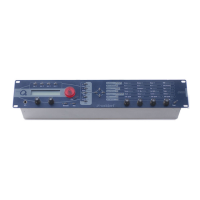Sound Parameters – Filter Types
81 Waldorf microQ User´s Manual
Comb+ and Comb-
The Comb filter types differ from the other filter types greatly, because they don’t actually damp any
part of the signal, but instead add a delayed version of the input signal to the output. What exactly is
a Comb filter?
A Comb filter is basically a very short delay that can be controlled in length and feedback. The delay
time is so short that you can’t hear its individual taps but a colorization of the original signal created
by peaks or holes in the frequency spectrum. The frequency of the colorization is set by the delay
length, which is controlled in the microQ through Cutoff, while the amount of colorization is set by
the Comb filter feedback, which is controlled in the microQ through Resonance.
Frequency
Level
Cutoff determines number of teeth
Resonance
Picture 25: Comb + Filter Type
Frequency
Level
Cutoff determines number of teeth
Resonance
Picture 26: Comb – Filter Type
So, as with all other filter types, the Comb filter is controlled with two parameters:
• Cutoff controls the delay length.
• Resonance controls the feedback depth.
Now, what sound can a comb filter produce? Here are some examples:
The Comb filter as a Chorus
This is the most basic way to use the Comb filter. A Chorus in fact is made of one or several Comb
filters, so this is an easy task to set up manually.

